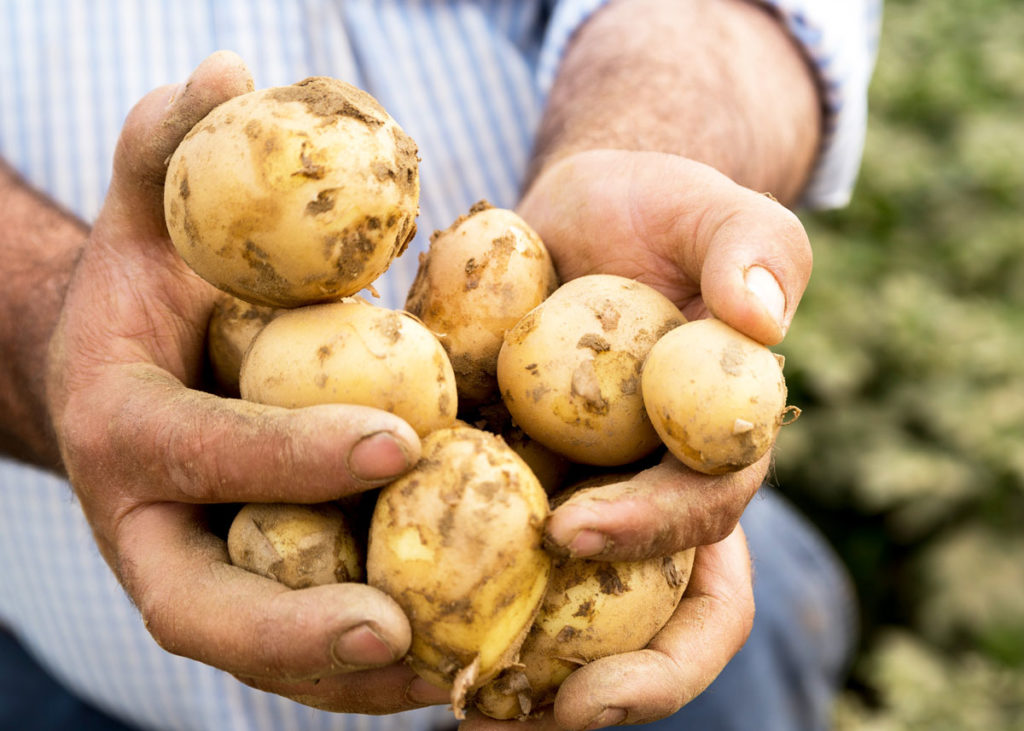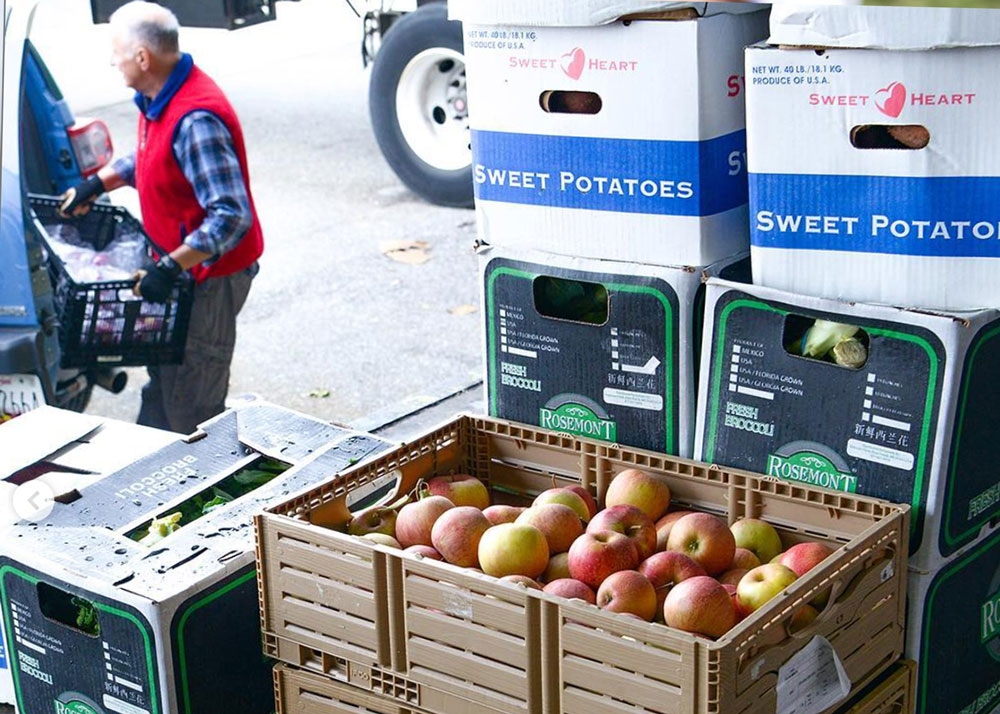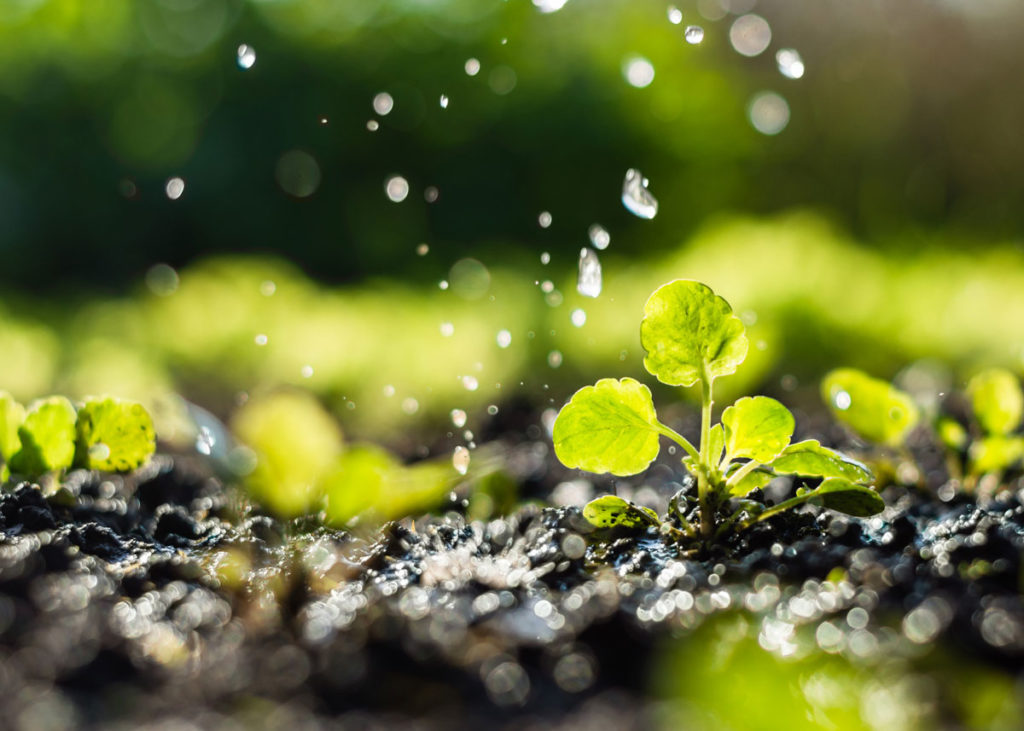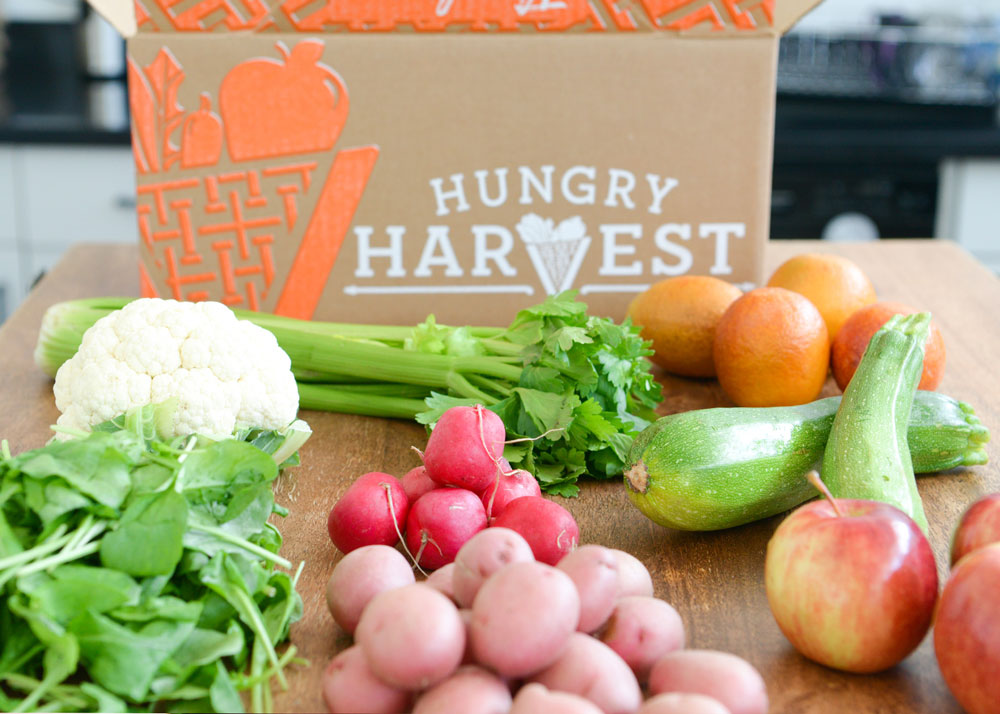
5 HUGE Problems with Food Waste – and ways you can help to solve them
If you mention food waste to anyone, thoughts will likely go to wilting lettuce in the crisper drawer or 2-week-old take-out lurking behind the eggs. (Not so much greenhouse gas emissions, the future of our food system and the serious challenges of running a farm…)
The 20 billion pounds of produce that go to waste every year in this country tell a totally different story. Every single one of those uneaten fruits and vegetables generates massive amounts of water waste, climate change-inducing greenhouse gas emissions, and makes the already difficult job of farming that much harder.
Food waste is destroying our food system and our environment.
Seems heavy, right? But all’s not lost. The good news is this is an issue we can actually do something about every time we sit down to eat – and there’s at least one company with an innovative way to solve it.
Hungry Harvest, a produce delivery service in Philadelphia, fights food waste by rescuing fruits and vegetables and delivering them to customers’ doorsteps.
Here are a few mind-blowing truths about the food waste crisis that keep them fired up to help customers find better food choices that help our planet and our communities.
5 BIG problems with Food Waste
1. Rescuing food waste = Saving TONS of carbon emissions

Food waste, and all the resources required to grow food that ends up going uneaten, is responsible for 4.4 gigatons of greenhouse gas emissions each year. That’s equivalent to about 72% of the emissions from the entire United States over the same period. To bring that down to earthly numbers we can understand, over the last five years, Hungry Harvest has rescued over 15 million pounds of food from going to waste. Simply re-claiming those fruits and vegetables reduced 4,334 cars-worth of emissions.
2. Food waste hurts farmers

“There’s nothing wrong with it, it’s a ripe apple, but it would not make a grocery store shelf at all.”
Corey McCleaf
When food goes to waste, farmers don’t get paid for their work or their produce they grow. A good portion of the 20 billion pounds of produce that goes to waste is left unharvested because a grower just can’t see the sense of spending money to harvest something they can’t sell: whether demand dries up, its a bumper crop or a deal falls through. OR the fruits and veggies don’t meet an arbitrary spec for size, color or shape. You can see, there’s a ton of reasons great crops can quickly go bad.
When Hungry Harvest began in 2014, one of the first farms they partnered with was McCleaf Orchards (Bigglerville, PA). A fifth-generation family farm, Hungry Harvest started buying their apples when they learned that apple growers can have a really difficult time selling their crop in its natural form.
“There’s nothing wrong with it, it’s a ripe apple, but it would not make a grocery store shelf at all,” says Corey McCleaf, Owner of McCleaf Orchards. Hungry Harvest tries to work with as many local and small farms as possible, to rescue this produce, and pay farmers a fair price so they have a better chance of selling their whole harvest.

Try Hungry Harvest
Use promo code GREENPHILLY19 and get $10 off your first Harvest.
3. 40% of total food wasted is a moral issue in a country with food insecurity
It’s a moral travesty that we waste 40% of the food in this country when 20% of those around us live in food insecurity — not having geographic or financial access to healthy food on a regular basis. Locally, 1 in 5 residents in Philadelphia struggle with hunger and food access. This is insane when so much food goes to waste.
Local organizations like Philabundance are working to make that right, and Hungry Harvest partners with hunger-solving groups like this to reconnect potentially-wasted food with those who need it most. In 2019 alone, Hungry Harvest has donated almost 7,000 pounds of fresh produce to Philabundance with no signs of slowing down.
4. Wasted food = wasted water

Of all water consumed in the US, 14% is used for irrigating, washing, and processing food that never gets eaten, and less than 1% of Earth’s water is usable and available for use. As demand continues to increase, freshwater will become an increasingly-limited resource. Wasting water to grow food that goes uneaten means there’s less of this limited resource available to grow food that actually could and would be consumed.
5. Food waste is a land-use nightmare

Every year, we leave 19% of our fields unharvested in this country — that’s equivalent to wasting the crops from a farm the size of New Mexico every year. It’s easy to say, why don’t farmers just grow less?
All it takes is one bad storm, drought or pest infestation to threaten a farmer’s livelihood if they’ve planted too little, so they have to prepare for the worst-case scenario. In a growing season with no major events, this means they grow more than they expected. The food is grown and ready to be harvested — we need to find ways to get that food to our plates and to those who are in need.
Try Hungry Harvest and get $10 off!

Want to make a difference with your food choices? Every Hungry Harvest delivery in Philly saves at least 10 pounds of food from going to waste, along with all the resources used to grow it. Sign up for food waste-fighting produce delivery using promo code GREENPHILLY19 and get $10 off your first Harvest.









